|
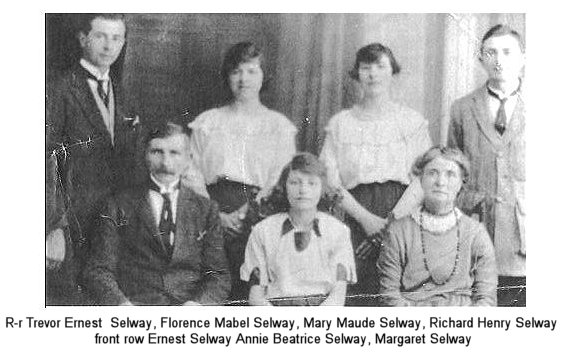
|
| ERNEST SELWAY AND FAMILY |
ERNEST
SELWAY... Like his brother, Ernist moved from Somerset to Aberdare in search of work. He is recorded as
being a collier and hewer in the 1901 census. He married Magaret Jones, the sister of Mary Gwenllian, in 1894. Ernest and Margaret’s children were Florence Mabel Selway, Richard Henry Selway, Trevor
Ernest Selway, Mary Maude Selway, Annie Beatrice Selway.
AMERICAN CONNECTION
It was through Richard Henry Selway, who married
Elsie Evans, that the American family connection took place. Richard Henry lived until 1996, reaching 99 years. His son, Richard
Arthur Selway and his wife Dannith Karen, are still strongly in connection with
the Selway family in the UK.
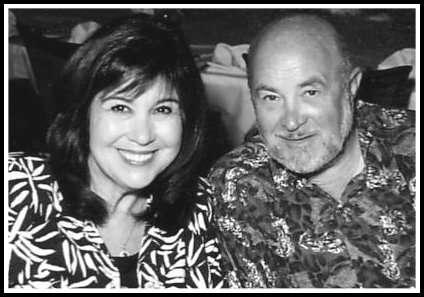
|
| DICK and DANNITH SELWAY |
JAMES HENRY SELWAY Brickyard Laborer at 19 years
FREDRICK
CHARLES SELWAY, born 1863, and an unmarried, Bricklayer and labourer in 1881 census. However, by 1891 he was lodging
at St Saviours, Bermondsey, London where he had become a fireman. By 1901, he had married a girl named Eliza and had three children, Doris,
Fredick J and Lilian.
ELIZA
JANE SELWAY married Frederick John Farrant born at Axminster, Devon,
England. The family moved from Somerset to Aberdare., living at 13 Crown Row Aberdare in 1901. There, John Fredrick was
a coal miner. Their children were ...Floria Farrant, Lily Farrant and Alice
Maud Farrant. Lily, was born in 1895 at Aberdare. She married Richard Albert Bevan (Bert) of Tonmawr, Port Talbot, at Merthyr Tydfil in 1918. (They were known to us as Uncle Bert and Aunty Lily)
ALICE
SELWAY ... married Fredrick Allen from Bridgewater
whose occupation was a miller. They moved to Cardiff in about
1891 where Fredrick continued his work. They lived at 11 Tenby Road,
Cardiff in that year. By 1901 they were living at 25 Abernant Row, Aberdare where
Fredrick is recorded as being self employed, though it is unclear as to his actual occupation at the time. Their children
were Fredrick, born 1890, Alice, born 1893 and Harry, born
1895.
EDWIN
SELWAY (Salway) and ERNEST SELWAY were twins, born in 1871. (Edwin,, according to the 1891 census
was a servant aged 18 at the home of a farmer and dairyman, Sidney and Mary Maria Dinning .... at 66 Saltmore, Stoke St Gregory.
Edwin emigrated to Australia and a search of records have shown that lived
in the Victoria region. He is recorded as being a driver
with a home at Drysdale Road, Moolap, Corio. He married
a Elizabeth Jane Everett in 1900 and their children included John Edwin Selway, born 1905 and Elsie Elizabeth Selway. Further
records show that John Edwin died in 1949 at Geelong, Victoria,
Australia. His father Edwin Selway died in 1955, also at Geelong.
ROSE SELWAY(Rosina) married William James Lewis
of Aberdare, South Wales.
EVA
BLANCH SELWAY married to someone with the family name of HODD.
JAMES
WALTER SELWAY ( known as Walter) He married Louise Watts at Bethesda
Chapel, Monk Street, Aberdare on 1 October 1905. Although
he was born in Somerset and worked as a bargeman, he moved to South Wales.
James and Louise had the following children between 1906 and 1921 ... Martha Elizabeth Selway, Ada Evelyn Selway, Elma Jean
Selway who died as a child, Charles H Selway, Walter James Selway, Rosina Selway, Haydn Selway, Jean Elma Selway.
Hayden married Enid
and lived in South Wales. Their children are Robin and Steven Selway, living in the South
of England. Robin’s children are Mark and Donna. Mark’s wife, Karen, has contributed to the family history.
FLORENCE
SELWAY married Ted Bernard. They were living in North Petherton, Somerset
in 1901.
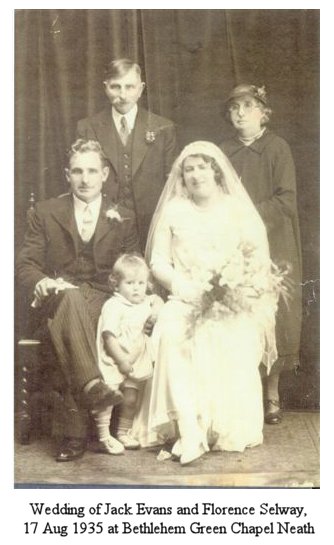
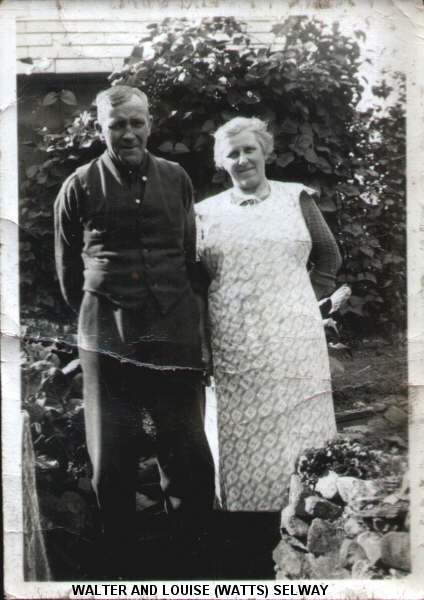
|
| JAMES WALTER AND LOUISE SELWAY |
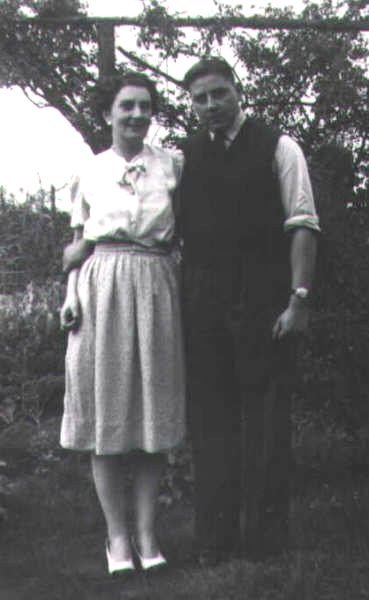
|
| ENID & HAYDON SELWAY (son of James Walter) |
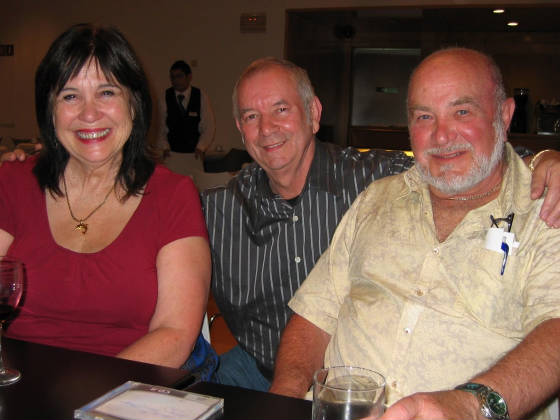
|
| Dannie & Dick Selway with Geoff Selway (middle) in Barcelona April 2009 |
Descendants of HENRY SELWAY (Sawley) 3, 1833 and ELIZA MEAD
1 HENRY
SELWAY (SAWLEY) 3
..
+Eliza Mead
.............
2 James Henry Selway
.............
2 Frederick
Charles Selway
.............
2 Eliza Jane Selway
.................
+Frederick John Farrant
.............
2 Alice A Selway
.................
+Fredrick Allen
.............
2 Edwin Selway (Salway)
.................
+Elizabeth Jane Everett
.............
2 Ernest Selway
.................
+Margaret Jones
.............
2 Rose Selway (Rosina)
.................
+William Lewis
.............
2 Eva Blanch Selway
.................
+..... Hodd
.............
2 Harry Selway
.................
+Mary Gwenllian Jones
.............
2 James Walter Selway
.................
+Louise Watts
.............
2 Florence Selway
.................
+Ted Bernard

THE SOUTH WALES COAL MINES
South Wales' valleys and mountain ridges were once a very rural area
of great natural beauty, famous for its river valleys and ancient forests. This changed to a considerable extent during early
the Industrial Revolution when the Glamorgan and Monmouthshire areas were exploited for coal and iron. By the 1830s, hundreds of tons of coal were being transported by barge
to ports in Cardiff and Newport.
In the 1870s, coal was transported by rail networks to these docks.
The Marquess
of Bute, who owned much of the land north of Cardiff, built a railway system on his land that stretched from Cardiff into many of the valleys where the coal was being found. Lord Bute then charged taxes
per ton of coal that was transported out using his railways. With coal mining and iron smelting being the main trades of South
Wales, many thousands of immigrants from England, Scotland, Ireland, Cornwall and even Italy came and set up homes in the
valleys and cities. Very many came from other mining areas such as Somerset, the Forest of
Dean in Gloucestershire and the tin mines of Cornwall, as a large but experienced and willing workforce was required. Whilst some of the migrants
eventually left the area, many settled and established in the South Wales
valleys between Swansea and Monmouth, English speaking communities with a unique identity. Industrial workers were housed
in cottages and terraced houses close to the mines and foundries in which they worked. The large influx over the years caused
overcrowding which lead to outbreaks of Cholera, and on the social side, the near-loss of the Welsh language in the area.
Although the coal mines offered work, it was extremely
hard and never without danger. Explosions and other accidents were bound to happen in such conditions and many men died as
a result of such work.
The 1930s saw the loss of almost half of the coal pits in the area, and this number
declined further in the years following Second World War. Now, very little coal mining exists.
|

